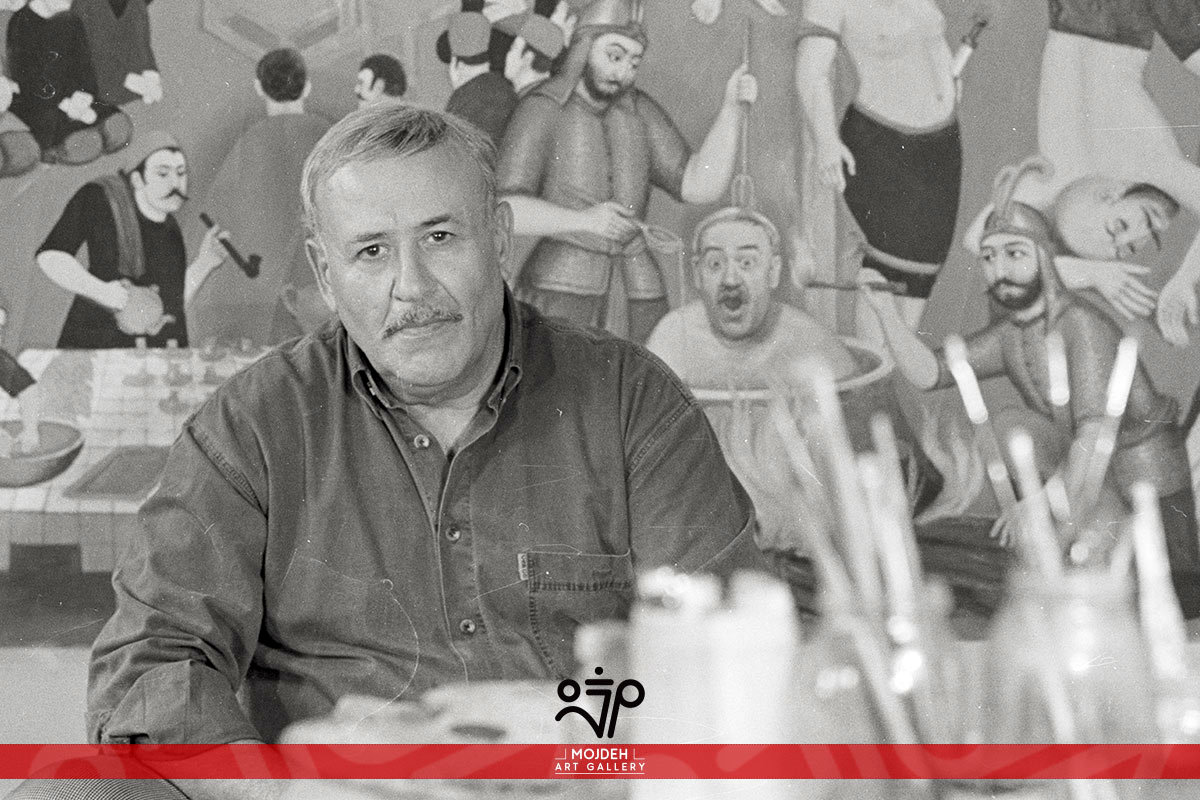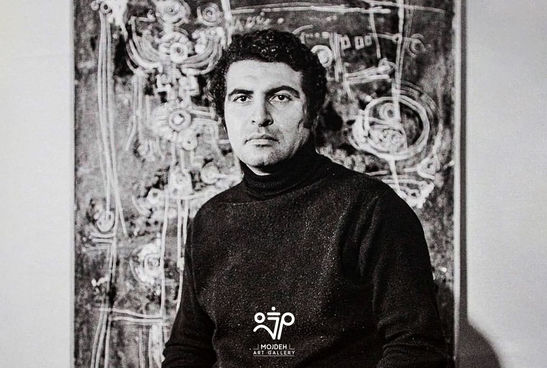Sadegh Tabrizi

Sadegh Tabrizi, born in Tehran in 1939, is one of the most influential, multifaceted, experimental, and prolific artists in the history of modern and contemporary Iranian art. His name is closely associated with the Saqqakhaneh movement. This movement can be seen as the peak of the joyous journey of modern Iranian art, demonstrating that Iranian modernism was not merely a follower but had the power to give birth to new artistic ideas. The Saqqakhaneh movement, born from the combination of modern art structures with indigenous elements and traditional motifs, is a well-known aspect of the Iranian-oriented modernist movement. Emerging in the early 1960s, it provided a regional interpretation of the broader narrative of modern art. Rather than insisting on an avant-garde approach, it emphasized preserving past achievements and continuing previous values. Saqqakhaneh was rooted in both a modernist and avant-garde perspective while also honoring and celebrating the Iranian artistic tradition. Due to this dual nature, it has always played a significant role in the general public's appreciation of modern art in Iranian society.
Sadegh Tabrizi studied miniature painting at a boys' highschool from a young age. After graduating, he worked in the ceramics workshop of the Fine Arts Department. His first collection of works, which included ceramics decorated with linear forms, marked some of the earliest examples of Iranian Calligraphy Painting in those years. Following the opening of the Decorative Arts Faculty, Tabrizi pursued specialized art studies and received his master's degree in interior architecture from this faculty in 1967. During his studies at this faculty, Tabrizi was a contemporary of other influential artists of the Saqqakhaneh movement, such as Massoud Arabshahi, Mansoor Ghandriz, and Faramarz Pilaram. In the early 1960s, he and his contemporaries founded the Iran Hall and held an exhibition of their works. This exhibition was one of the most important artistic events of that time, and Tabrizi also participated with a work from his abstract collection. In his works, Tabrizi always used his unique characters, which were a combination of his diverse teachings. Among his most important collections from the 1970s is 'Khuli.' Created around the character of Khuli in the Ashura epic, this collection was exhibited at the Seyhoun Gallery and was a joint work by Tabrizi and Abbas Boloukifar. Tabrizi was also very active in collecting and gallery management. In the mid-1970s, he opened Gallery 66, but it didn't last long as he emigrated to England for 15 years following the Islamic Revolution in the early 1980s. Other collections by Tabrizi include Lovers and Beloved, War and Peace, Calligraphy Painting, and numerous works in various printmaking techniques. A lasting mural by Tabrizi remained in the former Hilton Hotel, but it was unfortunately tampered with and damaged after the revolution. It's worth noting that Tabrizi was one of the first Iranian artists to have extensive international activities and win numerous awards. One of his most significant international collaborations was with the French art historian Michel Tapié, who exhibited Tabrizi's works in numerous exhibitions in France. Tabrizi was also one of the first Iranian artists whose works appeared in international auctions. His works are housed in various museums in Iran and around the world. This prolific and influential artist in Iranian art passed away in 2017 after six decades of valuable work.
Saadat Afzood
Photo by Mehrdad Oskouei


